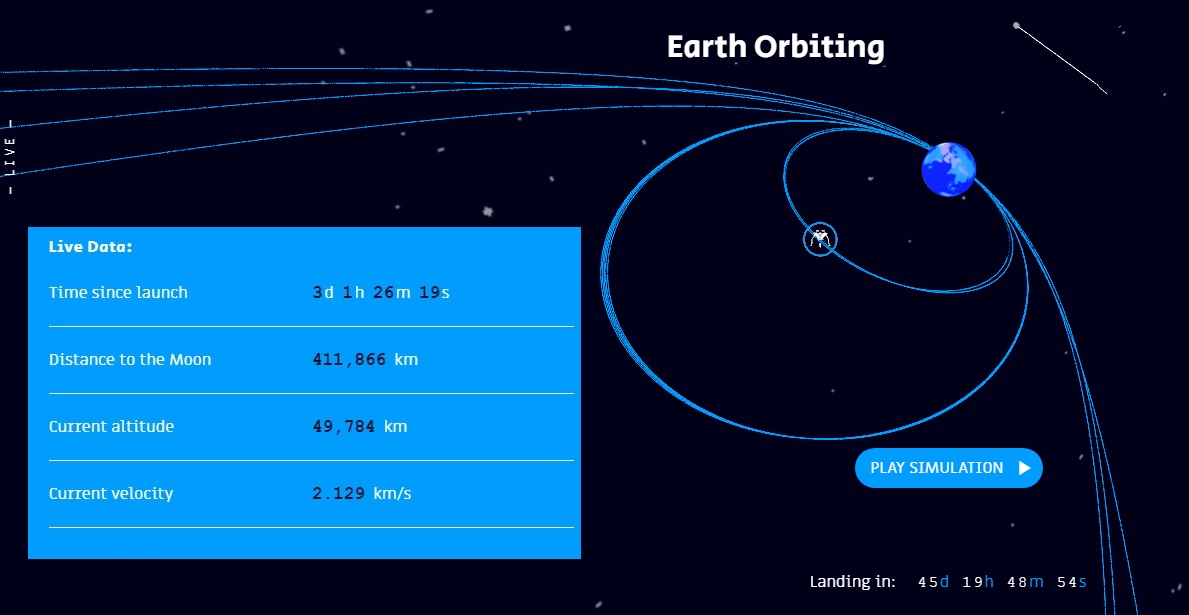
プライベートスペースの打ち上げの利点は、プロジェクトの実施中に各段階で現在の状況に関する視覚データをユーザーに提供できることです。これにより、天文学やその他の科学を普及させ、科学の成果や研究について一般の人々や子供にも理解できる言語で話すことができます。 月が流行りました!
以前は、SpaceIL組織によって開発されたBereshit月面モジュールの成功した打ち上げに関する出版物がすでにありました。イスラエル企業。
SpaceILチームのミッションについてはこちらをご覧ください 。
月の乗り物「Bereshit」の特徴:
-高さは約1.5メートルです。
-重量585キログラム(燃料あり)(燃料質量-390 kg)、燃料なし195 kg
Bereshitデバイスには熱保護および冷却システムがなく、月面での推定動作時間は約2日間(最大3日間)で、その電子機器とバッテリーは過熱により故障し、デバイスとの接続は失われ、新しいものになりますLunokhod-2(Luna-21ミッション)およびApollo 17ミッションモジュールの隣にある、透明度の海にある月の記念碑。

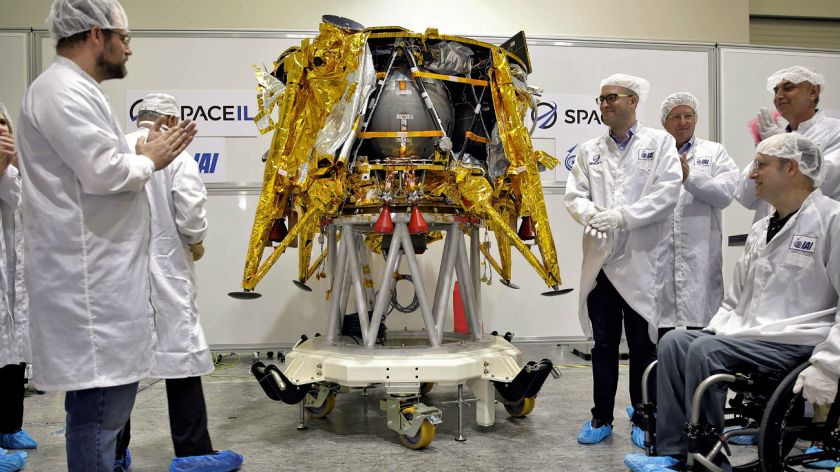
Bereshit宇宙ミッションの段階:
-2019年2月22日:ケープカナベラル(フロリダ州)の打ち上げ現場からのFalcon 9ロケットでの打ち上げ。
-地球の周回軌道に進入し、一連の操作(数秒間エンジンをオンにする)を実行して、地球の周りの各軌道の後に楕円形の室内装飾の遠地点を増加させます。
-2019年3月20日:400,000 kmの遠地点での軌道。
-2019年4月4日:月軌道へのアクセス(月の重力場による捕獲);
-2019年4月11日:月面への着陸手順、着陸「Bereshit」はNASAの月軌道プローブであるLROによって監視されます。
同時に、「Bereshit」が成功すると、ある種の記録を破ります-彼は可能な限り長い軌道に沿って月に飛びます。
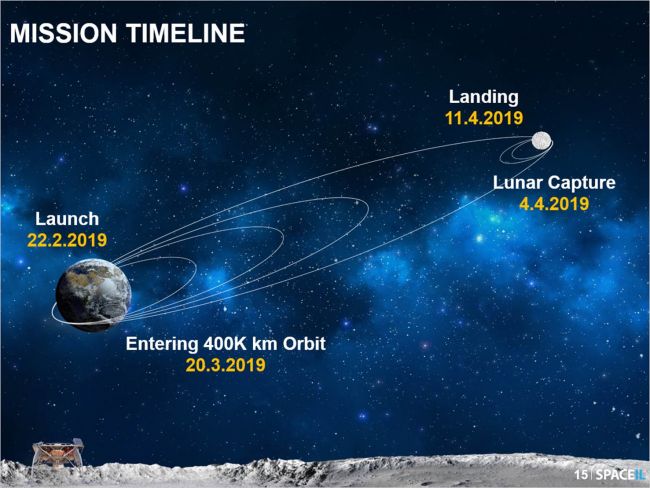
「私たちは、地球から69.4千キロメートルの距離で最初の成功した操縦を実行し、30秒間エンジンをオンにしました。 これがメインエンジンの最初のインクルードです! 次の修正は2月25日に実行されます」 とSpaceILチームは述べました 。
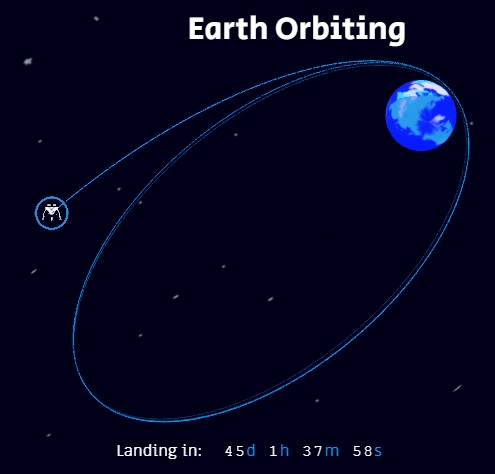
SpaceILチームからのステップの完了に関するレポート:
このデバイスのステータスに関するレポートは、 Twitter Israel To The Moon SpaceILチームにあります。
ちなみに、SpaceILによると、最初の機動では、エンジンは、以前に計画されていた近地点ではなく、ピーク時に30秒間オンになりました。
非営利団体SpaceILは、Bereshitミッションの現在の状態に関するシミュレータとリアルタイムデータを備えたオープンアクセスのオンラインリソースを提供しています 。
このリソースについて調べることができます。
-残りの飛行時間に関するデータを含む、地球と月に対するBereshitデバイスの現在の視覚的位置:

-マウスホイールを使用して、画像のスケールを変更できます。マウスの左ボタンを押したまま、マウスを動かして画像の傾斜角度を変更できます。
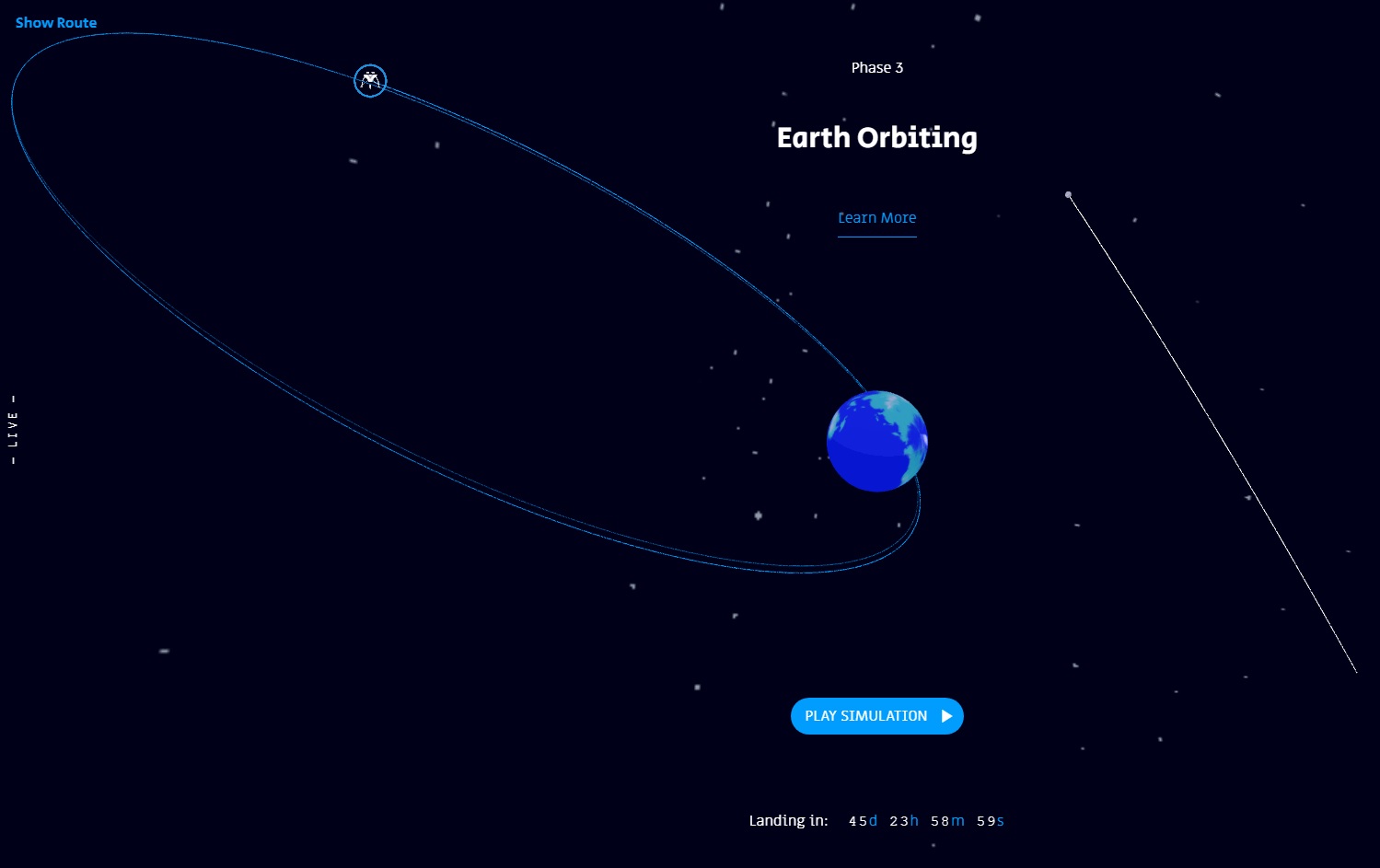
-Bereshitデバイスパラメータのオンラインデータは、画面中央の[詳細]ボタンをクリックすると表示できます(データは常に変化します。これは非常に興味深いことです)。

画面の左上にある[ルートを表示]ボタンをクリックすると、Bereshitデバイスの計画された軌跡を見ることができます([ルートを非表示]ボタンをクリックして無効にできます)。
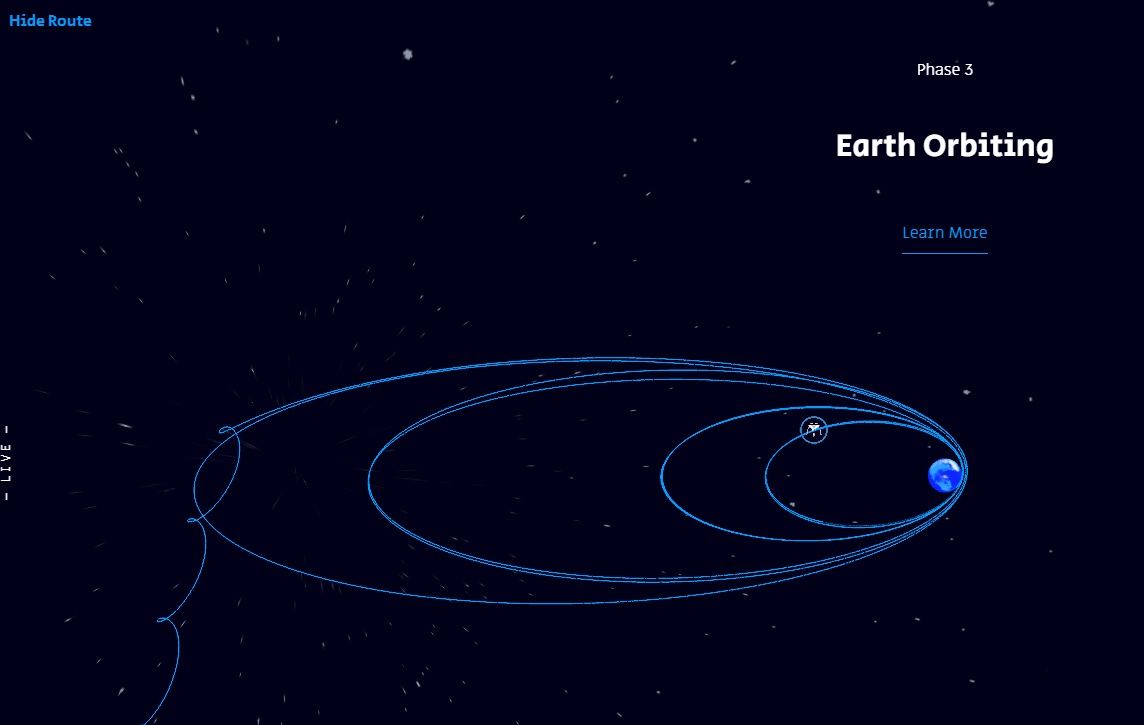
このプロジェクトの最も興味深い部分はシミュレーションであり、加速時間で視覚的に、すでに完了しており、まだBereshitデバイスを通過していないすべてのステップが表示されます。
そのため、「Play Simulator」ボタンをクリックします。
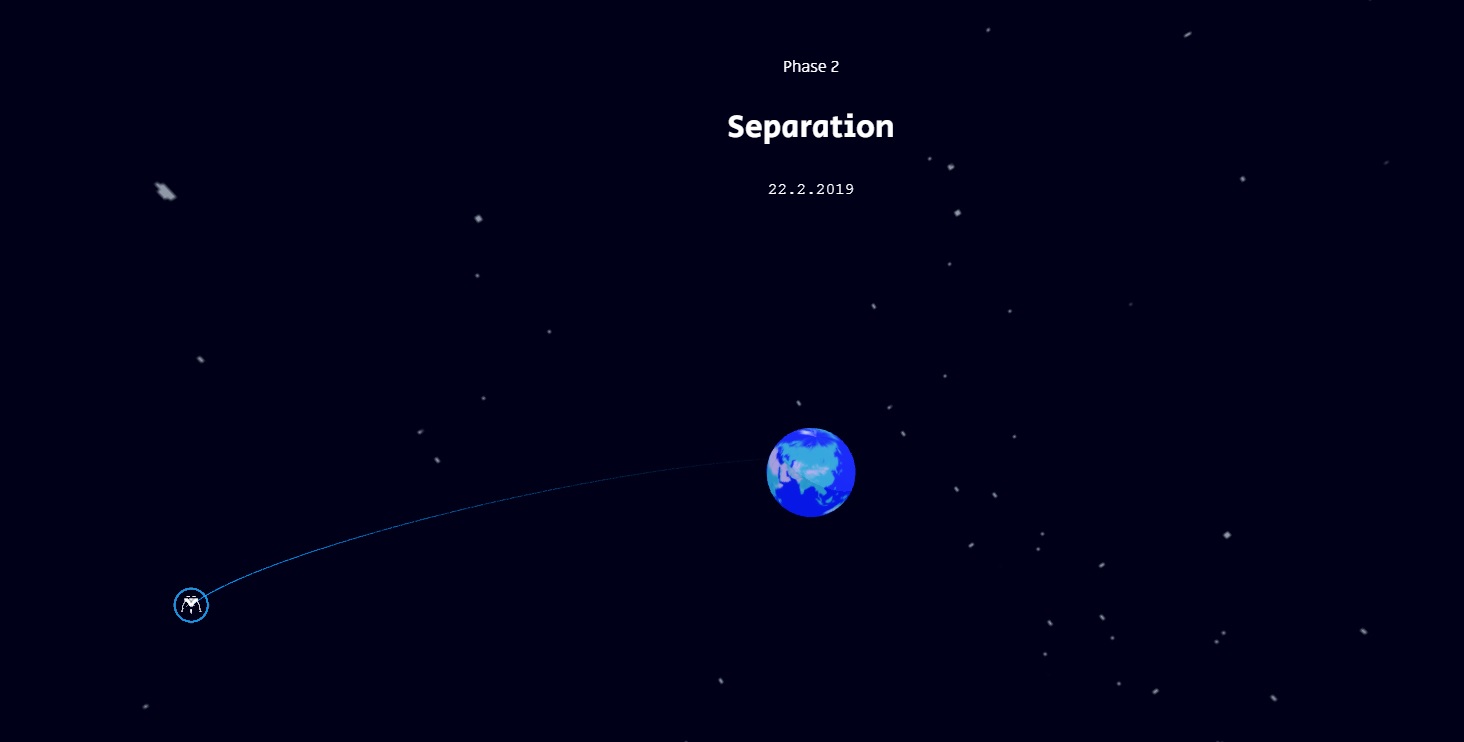
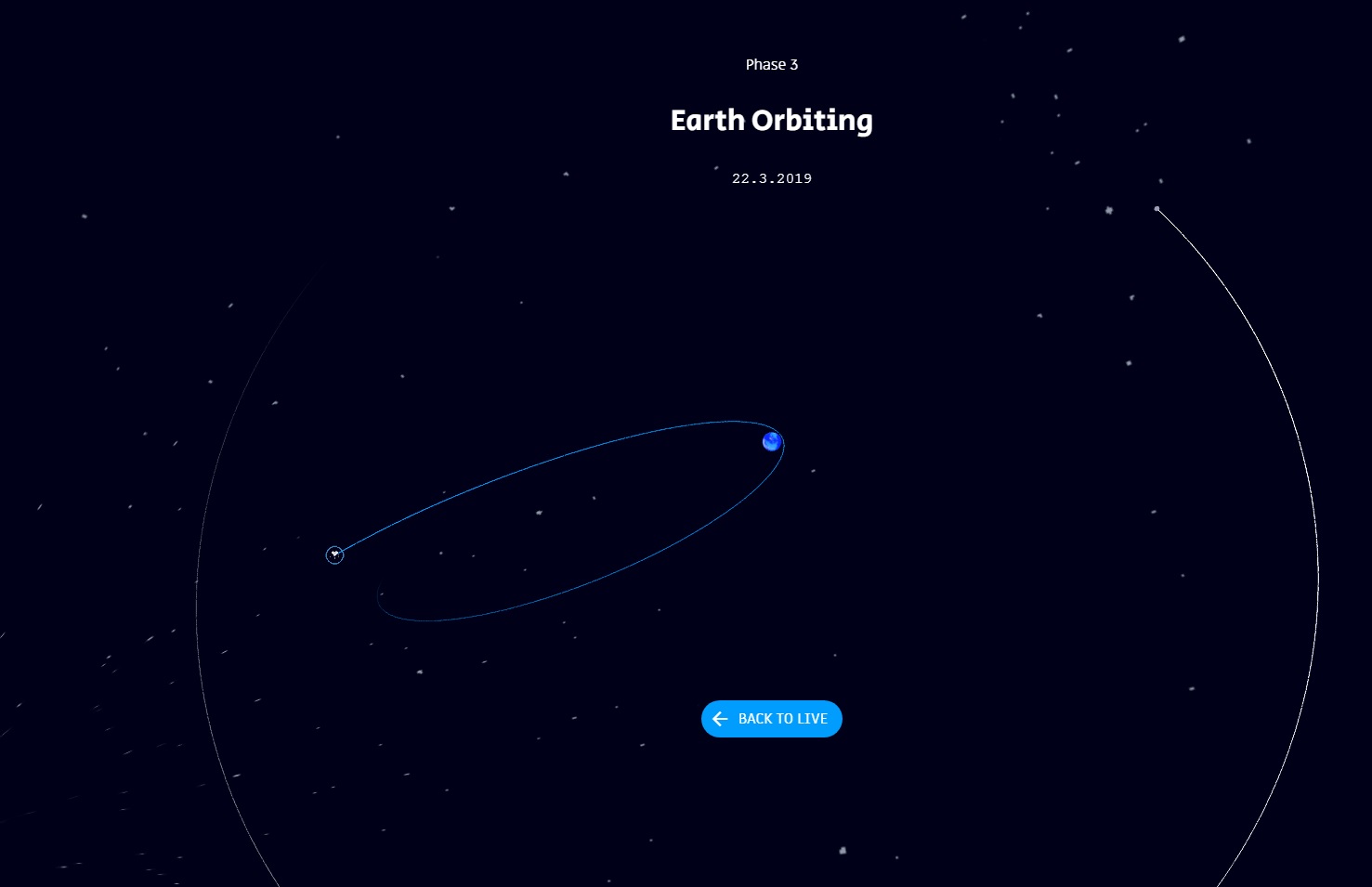

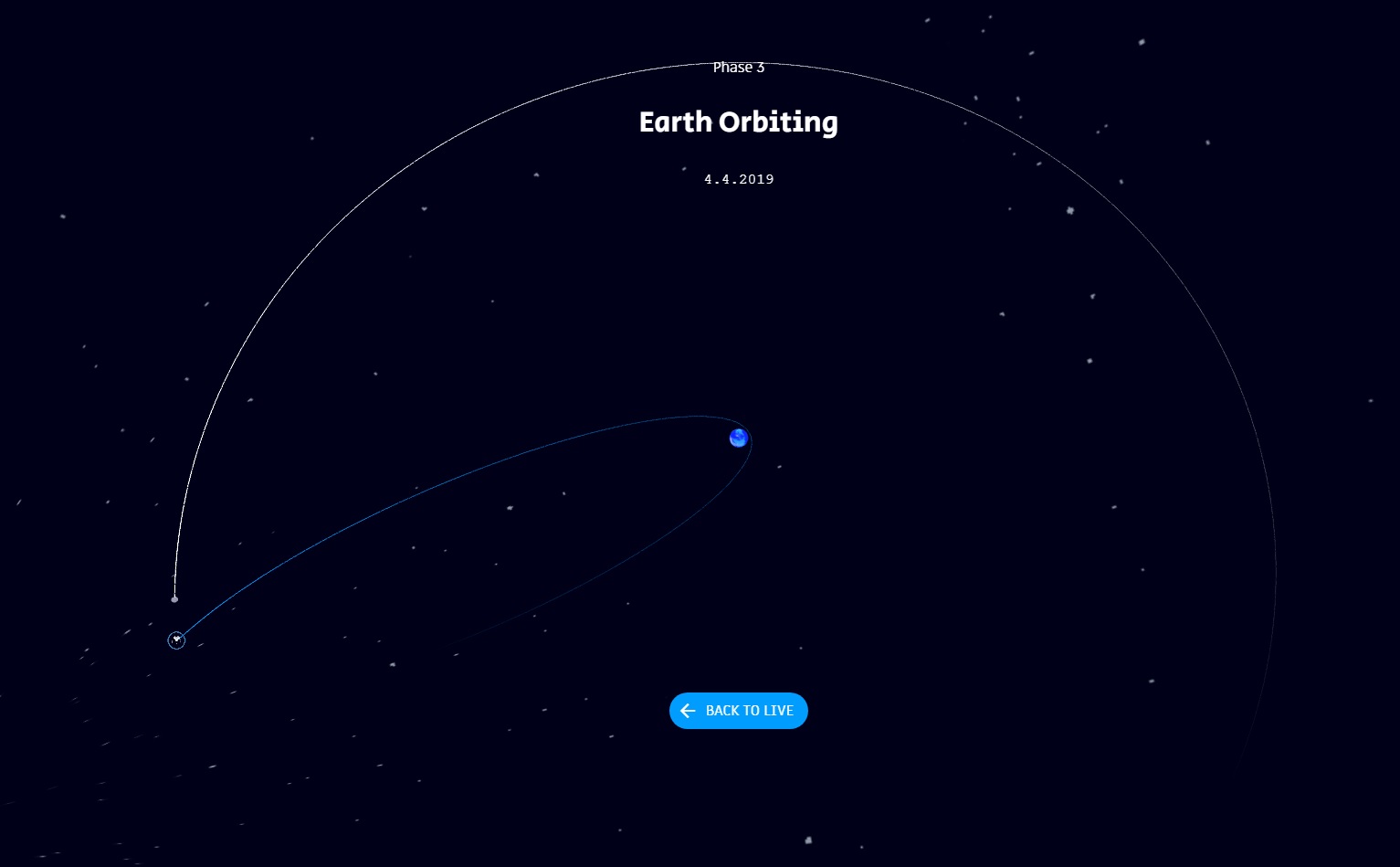
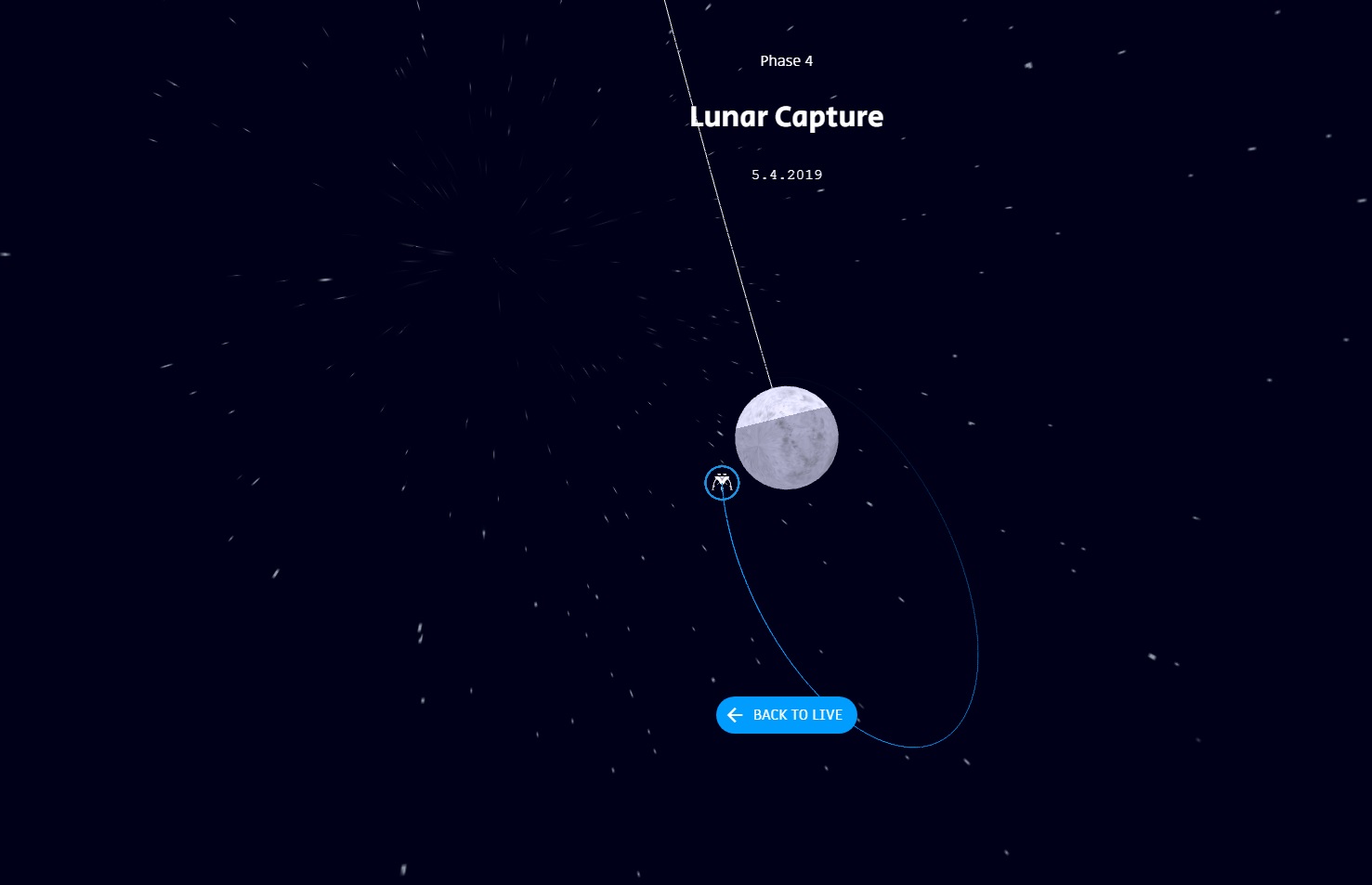

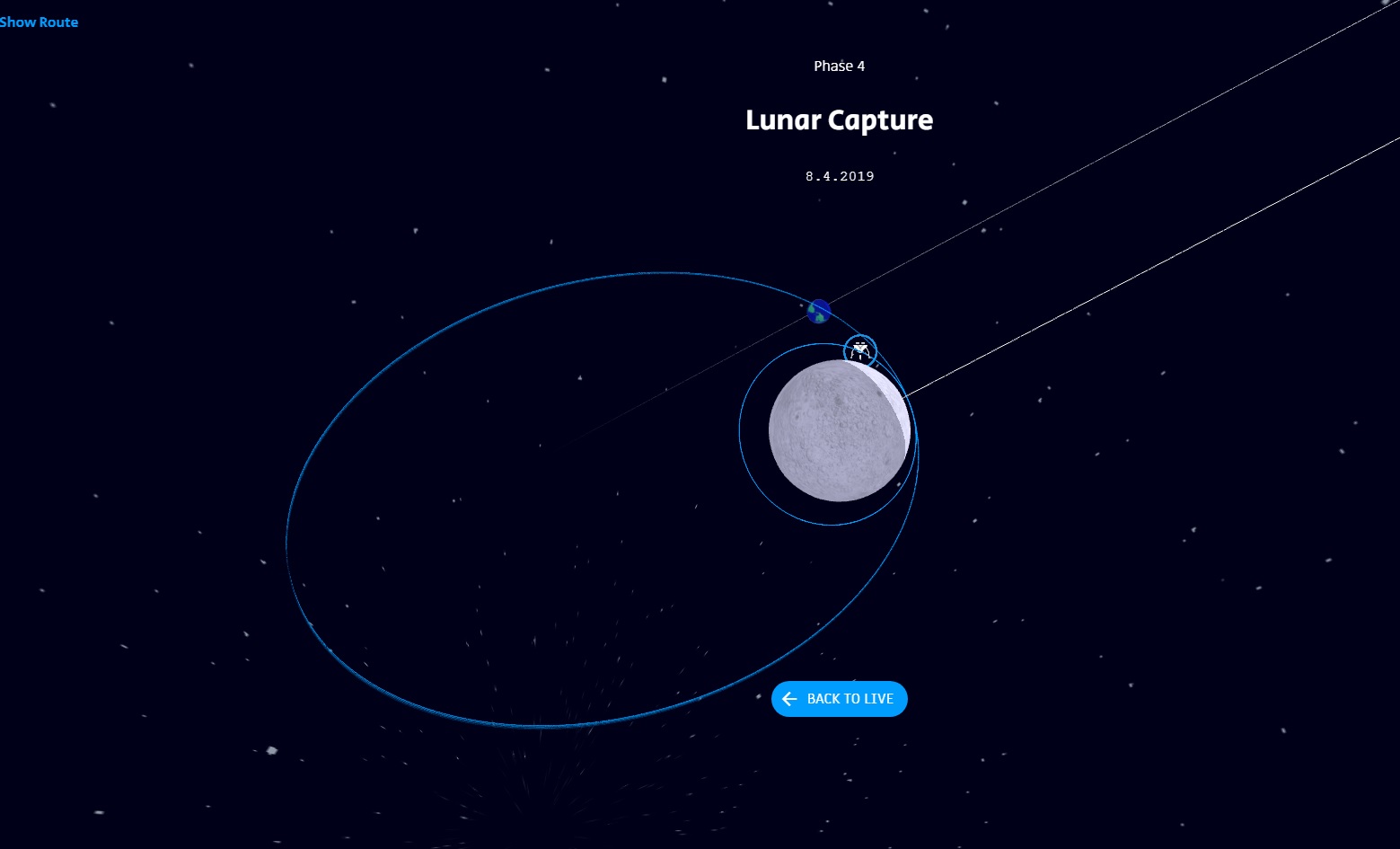
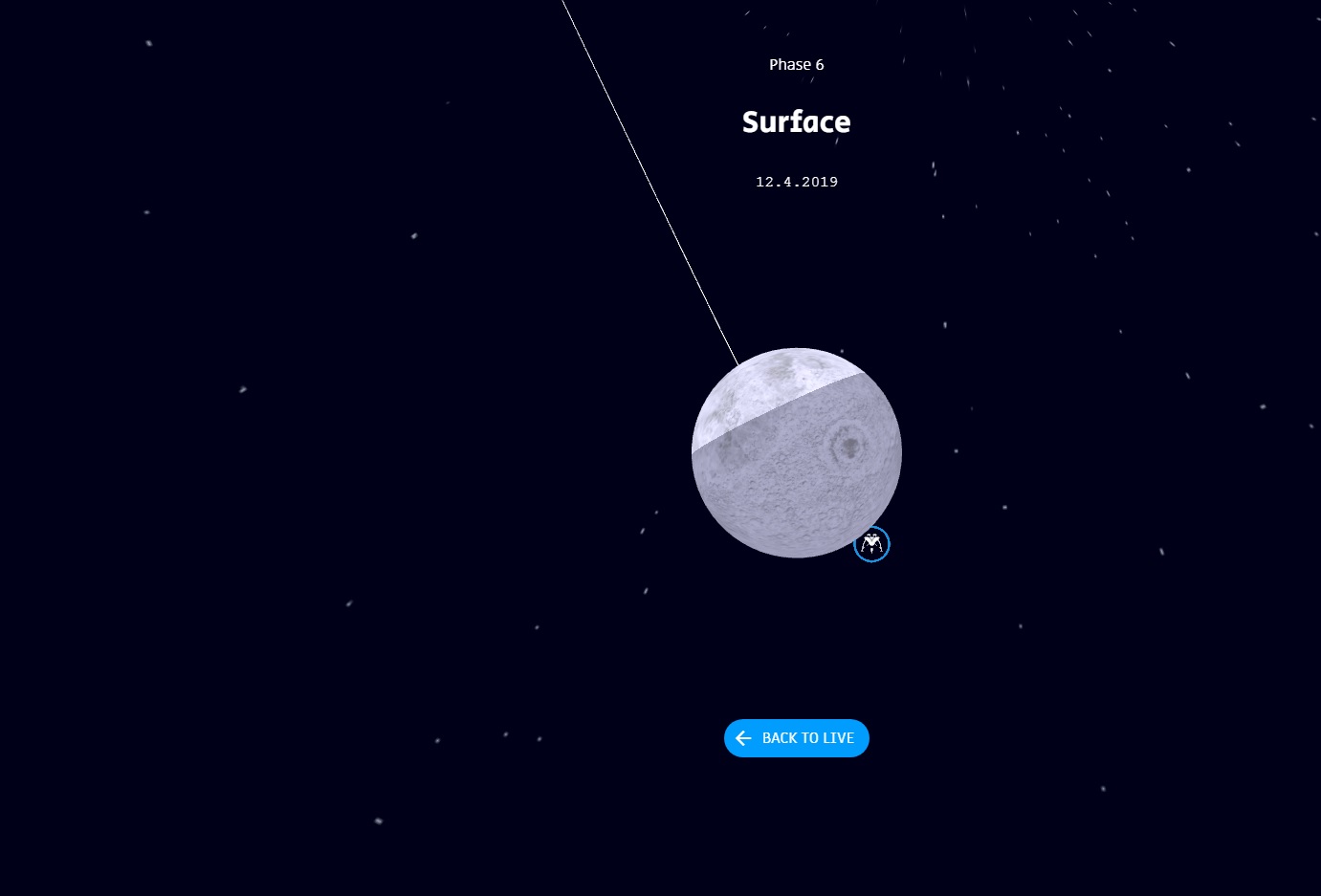

ちなみに、このサイトのコードを調べるのも面白かったです。何か見落としていたかもしれませんが、シミュレーターで一時停止する方法や表示速度を変更する方法は、これが可能かどうか不明です。
ビューソース:http://live.spaceil.com
<script> var currentTime = (new Date()).getTime(); //This line SHOULD be the actual code when the site is online //var currentTime = 1541408502000; //This line is a temporary line for debug purposes var time = currentTime; var interval; var intervalTime = 20; var si = 1; //si stands for 'Speed Index' var speed = 1; // var speeds = [0,1, 30, 60, 300, 900, 1800, 3600, 21600, 43200, 86400]; var speeds = [0,1, 30, 60, 300, 900, 1800, 3600, 21600, 64800, 86400]; var speedsT = ["paused","1 sec/sec", "30 sec/sec", "1 min/sec", "5 min/sec", "15 min/sec", "30 min/sec", "1 hour/sec", "6 hours/sec", "12 hours/sec", "1 day/sec"] var pause = true; var loading = 0; let launchingTime, landingTime; if (Detector.webgl) { var visualizer = new SpaceI.Visualize(document.getElementById('image'), currentTime); //This objects handles everything related to the 3D environment directly. See Space.js for more details. $(document).ready(function () { $.ajax({ type: "GET", url: "data/man.txt", dataType: "text", success: function (data) { visualizer.addMan(data); loadMore(); } }); $.ajax({ type: "GET", url: "data/data_m.txt", dataType: "text", success: function (data) { visualizer.addRouteM(data); loadMore();} }); $.ajax({ type: "GET", url: "data/data_s1.txt", dataType: "text", success: function (data) { visualizer.addRoute(data, 0); loadMore(); } }); $.ajax({ type: "GET", url: "data/data_s2.txt", dataType: "text", success: function (data) { visualizer.addRoute(data, 1); loadMore(); } }); }); animate(); } else { document.getElementById("load").innerHTML = "Unfortunately your browser doesn't seem to support WebGL."; document.getElementById("orbitviewer").style.height = "0px"; } function loadMore() { //this function removes the loading screen and starts the simulation only when all the important files have been loaded. loading++; //4 out of 5 calls for this function are a few lines above this one (in the ajax), the 5th is called after the WebGL scene has been established (see Space.js) $('#loadingStatus').html(`RECEIVING DATA ─ ${loading}/5`); if (loading == 5) { $('#load').hide(); setSpeed(); visualizer.cameraSetup(currentTime); pause = false; document.dispatchEvent(new Event('loadingFinished')); } } function animate() { requestAnimationFrame(animate); visualizer.render(); visualizer.onWindowResize(); //it's important that this function is called whenever the window dimensions change. } function realTime() { time = (new Date()).getTime(); //This line will be used when the site is actually online // time = currentTime; // time = landingTime; si = 1; setSpeed(); visualizer.setTime(time); visualizer.cameraSetup(time); } function changeSpeed() { var s = document.getElementById("speed").value; si = s - 0; //converts string to int speed = Math.sign(speed) * speeds[si]; $("#speedT").text(speedsT[si]); } function setupLine(t, n) { //called from the visualizer object to set the beginning and end of the timeline if(n==0) { launchingTime = t; $('#line').attr('min', t); } else if (n == 1) { landingTime = t; $('#line').attr('max', t); } } function setSpeed() { speed = Math.sign(si) * speeds[Math.abs(si)]; //if 'si' is negative just take the negative speed. $("#speedT").text(((si < 0) ? "-" : "") + speedsT[Math.abs(si)]); } function timeC() { var t = document.getElementById("line").value; time = t - 0; //Converts string to number. If it's stupid and it works it ain't stupid. update(); } </script>
シミュレーター用の個別ファイルのデータは次のとおりです 。
live.spaceil.com/data/man.txt
live.spaceil.com/data/data_m.txt
live.spaceil.com/data/data_s1.txt
live.spaceil.com/data/data_s2.txt
Live Dataのデータは、この方法で取得されます(計算データであるか、実際にデバイスから取得されたデータであるかを理解したい)。興味深いことに、それらは個別に取得し、パラメーター値に従ってプロットできます。
ライブデータ
<div id="live_data_title">Live Data: </div> <table class="more_info_container"> <tbody> <tr> <td id="time_since_launch_label">Time since launch:</td><td id="time_since_launch_number">-</td></tr> <tr> <td id="distance_moon_label">Distance to the Moon:</td><td id="distance_moon_number">-</td></tr> <tr> <td id="altitude_label">Current altitude:</td><td id="altitude_number">-</td></tr> <tr> <td id="current_velocity_label">Current velocity:</td><td id="current_velocity_number">-</td></tr> </tbody> </table>
このリソースはさらに開発され、新しいデータが追加されると思いますので、お待ちしています。
2月26日からの最初の更新は次のとおりです。ポータルのテレメトリーは24時間ごとに更新されます。これは、デバイスでの機動のためにエンジンを起動するという現在の問題の解決策によるものです。
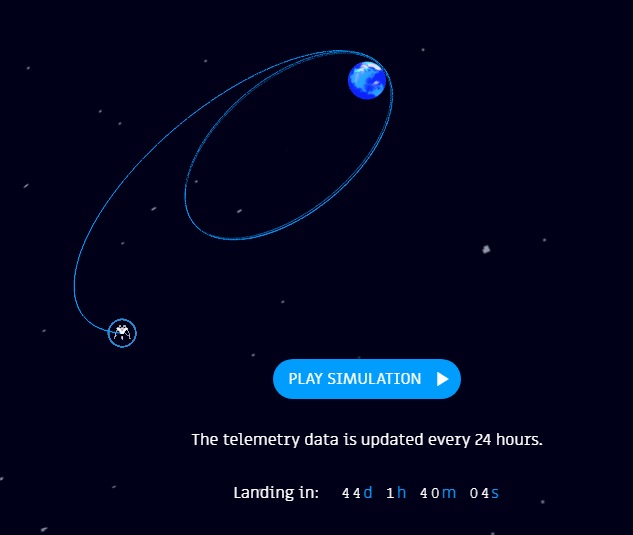
あなたが宇宙研究の歴史の一部になりうることを研究することによって、このような興味深く有益なオンラインリソースがあることは素晴らしいことです。